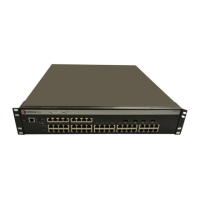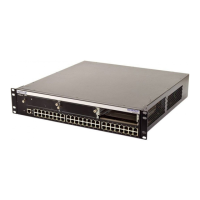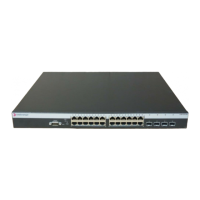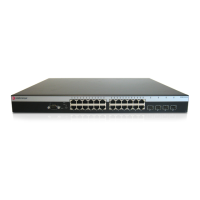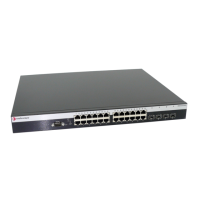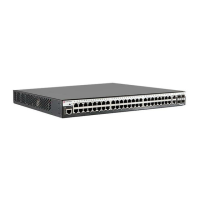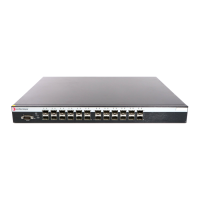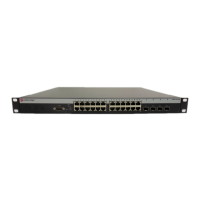Access Control List Commands
4-135
4
Default Setting
None
Command Mode
Interface Configuration (Ethernet)
Command Usage
You must configure an ACL mask before you can change frame priorities
based on an ACL rule.
Example
Related Commands
show marking (4-125)
ACL Information
show access-list
This command shows all ACLs and associated rules, as well as all the user-defined
masks.
show access-list [ip | mac] [mask-precedence in | out]
• ip - Specifies an IP access list.
• mac - Specifies a MAC access list.
• mask-precedence - Specifies mask precedence for IP ACLs.
- in - Specifies ingress ACLs.
- out - Specifies egress ACLs.
Command Mode
Privileged Exec
Command Usage
Once the ACL is bound to an interface (i.e., the ACL is active), the order in
which the rules are displayed is determined by the associated mask.
Console(config)#interface ethernet 1/12
Console(config-if)#match access-list mac a set priority 0
Console(config-if)#
Table 4-42. ACL Information
Command Function Mode Page
show access-list Show all ACLs and associated rules PE 4-136
show access-group Shows the ACLs assigned to each port PE 4-136
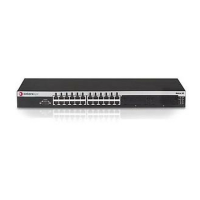
